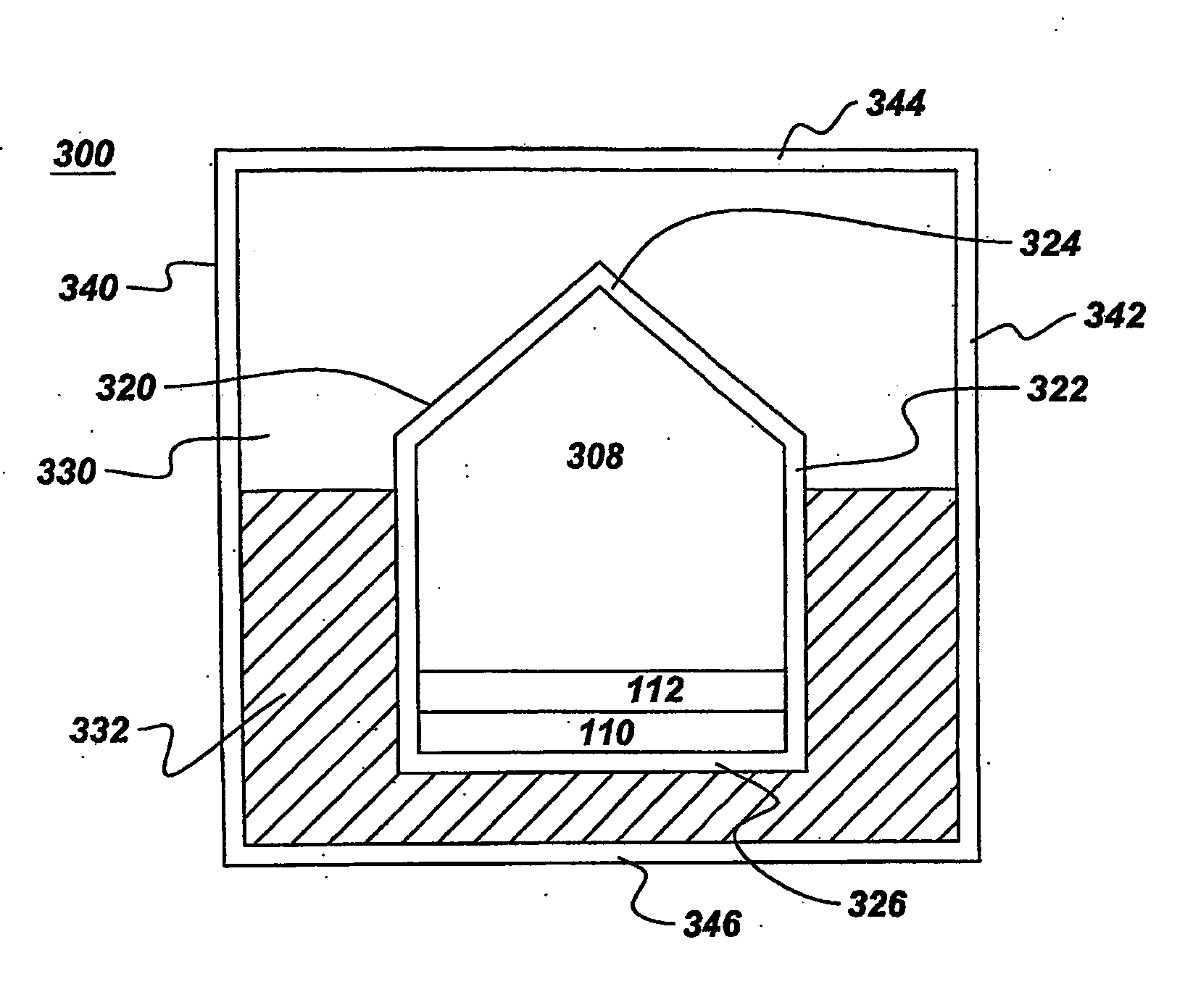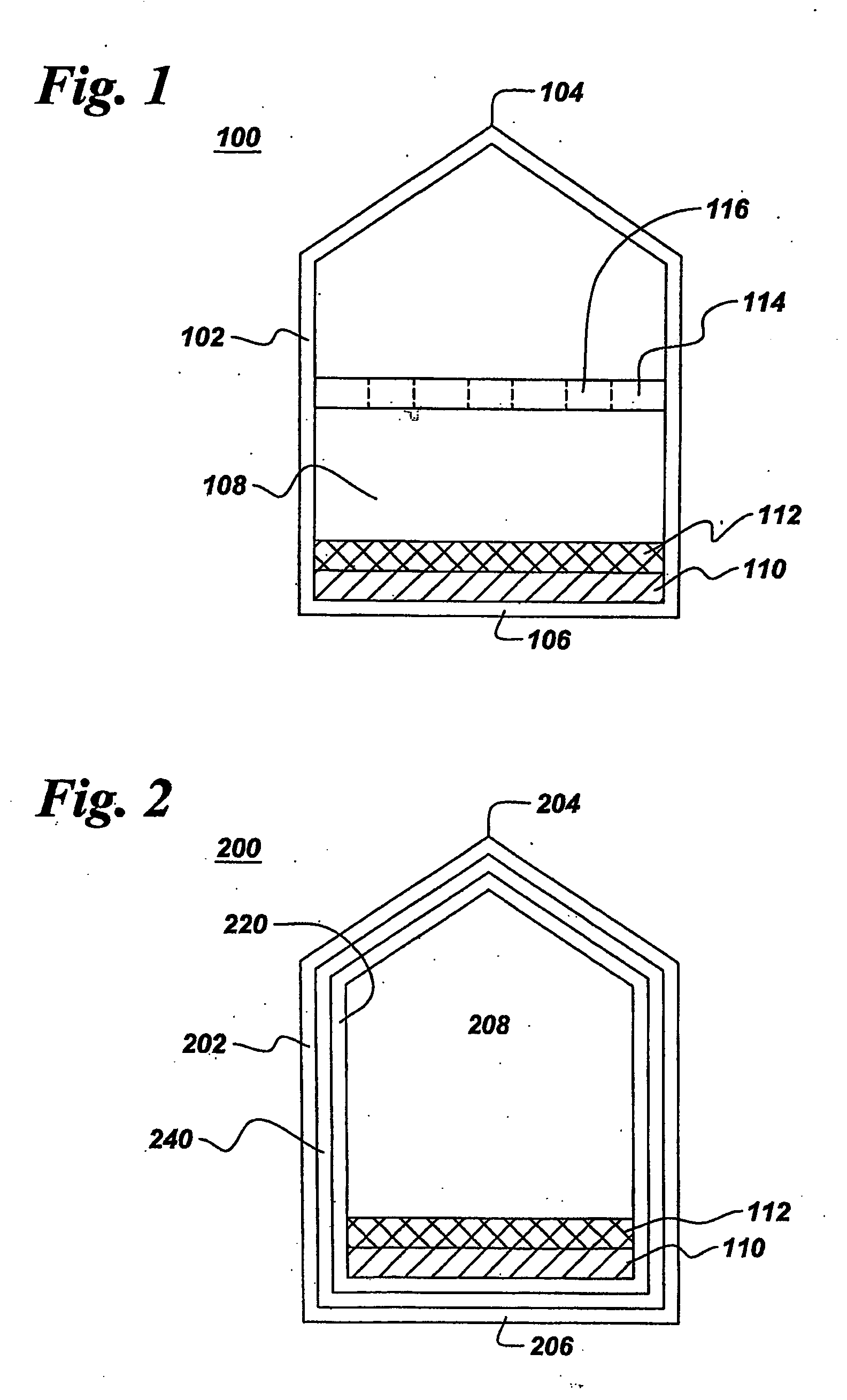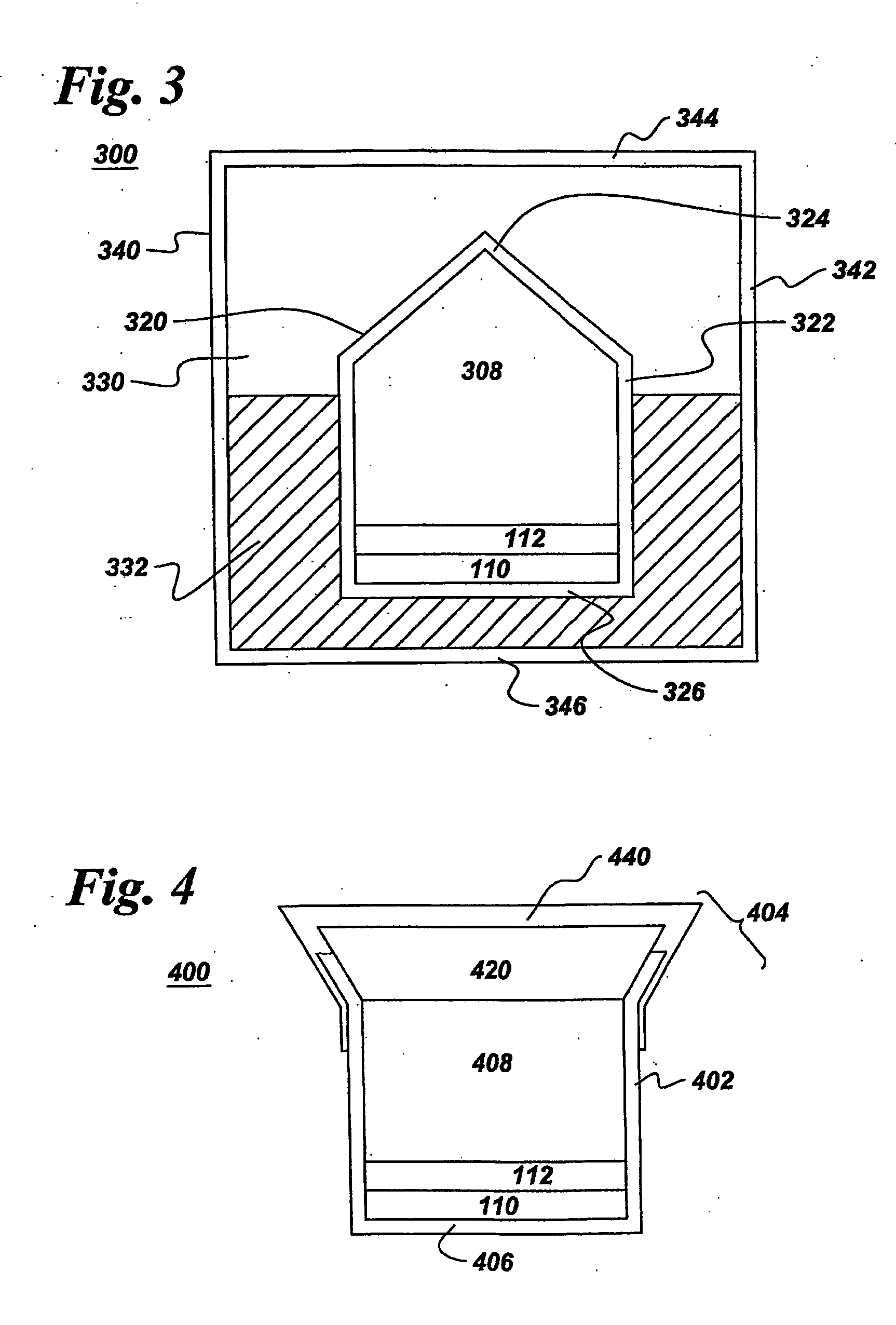High temperature high pressure capsule for processing materials in supercritical fluids
a supercritical fluid and capsule technology, applied in the field of capsules, can solve the problems of capsule burst, capsule contamination, and inability to process material inside the capsule at internal pressure,
- Summary
- Abstract
- Description
- Claims
- Application Information
AI Technical Summary
Benefits of technology
Problems solved by technology
Method used
Image
Examples
example 1
[0049] Approximately 0.015 g of GaN powder and 0.002 g of Li3N powder were mixed and pressed into a pill. The pill was inserted into a 0.175 inch diameter copper tube having a closed end and an open end. The open end of the copper tube was then attached to a vacuum manifold and evacuated. The gas manifold had two valves in series to allow the copper tube to be connected and disconnected from the manifold without exposing either the interior volume of the tube or the manifold to air. Approximately 0.048 g of NH3 was added to the copper tube by cooling the end of the tube with liquid nitrogen and condensing ammonia from the vacuum manifold. The quantity of ammonia added was determined by weighing the copper tube before and after filling. The open end of the copper tube was then pinched off using a hydraulic pinch-off press to form a capsule in which the only gas present within the capsule was the ammonia that had previously been condensed within the copper tube. The bottom portion of ...
example 2
[0050] Approximately 3.25 g of pure water was added to a 0.5 inch diameter copper tube having a closed end and an open end. The tube was then pinched off to form a capsule as described in Example 1. The capsule was embedded in salt and the capsule / salt assembly was then inserted into a cell and placed in a zero-stroke HPHT vessel as described in U.S. patent application Ser. No. ______, filed on ______, 2001, by Mark Philip D'Evelyn et al., entitled “Improved Pressure Vessel”. The capsule was heated to 360° C. Based on the phase diagram of water, the pressure within the capsule was approximately 1.6 kbar. The capsule / salt assembly was cooled and removed from the press, and the capsule was recovered by dissolving the salt pressure transmission medium in water. The capsule was found to contain only 1.38 g of water, indicating that 58% of the water leaked from the capsule during processing under HPHT conditions.
example 3
[0051] Approximately 0.21 g of GaN and 0.10 g of NH4F were added to a 0.5 inch diameter OFHC copper tube having a closed end and an open end. A plug having a beveled end for sealing the open end of the copper tube was machined from OFHC copper. To improve the chemical inertness of the capsule, both the plug and the interior of the copper tube were electroplated with a rhodium diffusion barrier and a gold coating, having thicknesses of 2 and 25 microns, respectively. Loading of the copper tube with GaN and NH4F was carried out under a nitrogen atmosphere within a glove box.
[0052] A capsule filler / sealing assembly similar to that shown in FIG. 7 was also located within the glove box. The guide sleeve was fabricated by reaming a 11-inch″ Ultra Torr® Union through and welding a fill tube to the side. The support sleeve, having a 0.5 inch inner diameter, and top piston were fabricated from hardened tool steel, and the base flange was fabricated from stainless steel. Silicone o-rings pro...
PUM
| Property | Measurement | Unit |
|---|---|---|
| thickness | aaaaa | aaaaa |
| thickness | aaaaa | aaaaa |
| thickness | aaaaa | aaaaa |
Abstract
Description
Claims
Application Information
 Login to View More
Login to View More - R&D
- Intellectual Property
- Life Sciences
- Materials
- Tech Scout
- Unparalleled Data Quality
- Higher Quality Content
- 60% Fewer Hallucinations
Browse by: Latest US Patents, China's latest patents, Technical Efficacy Thesaurus, Application Domain, Technology Topic, Popular Technical Reports.
© 2025 PatSnap. All rights reserved.Legal|Privacy policy|Modern Slavery Act Transparency Statement|Sitemap|About US| Contact US: help@patsnap.com



